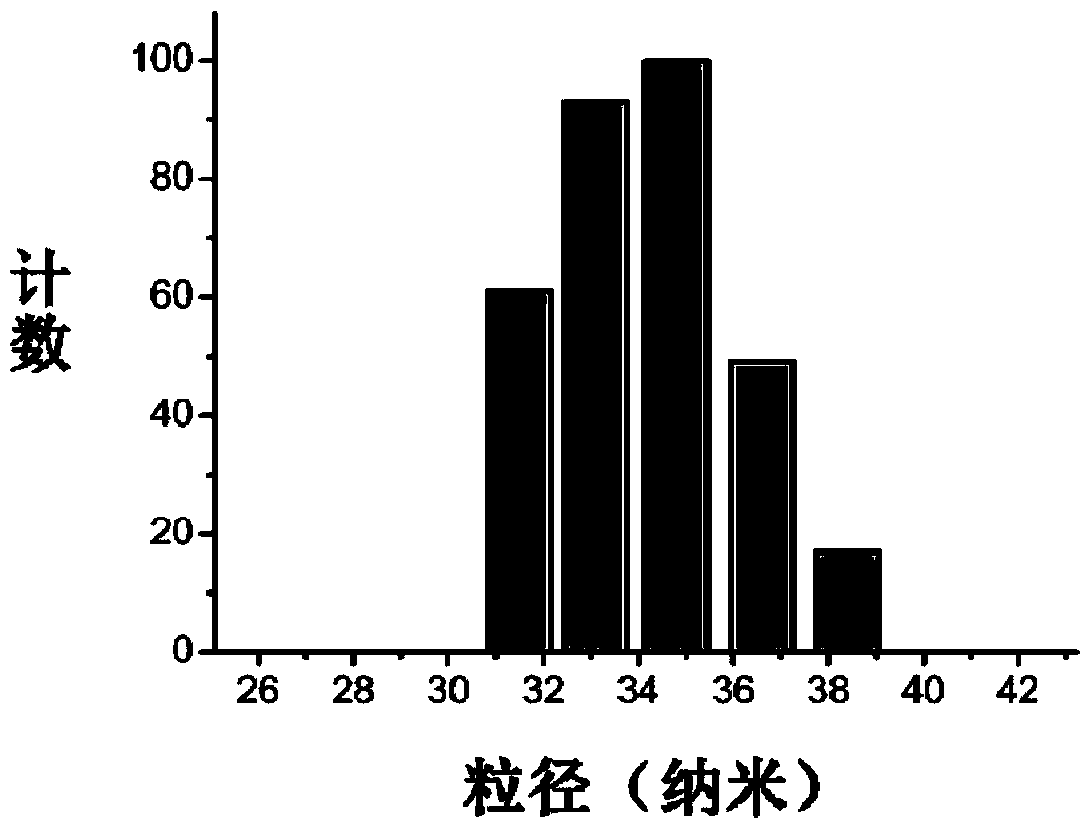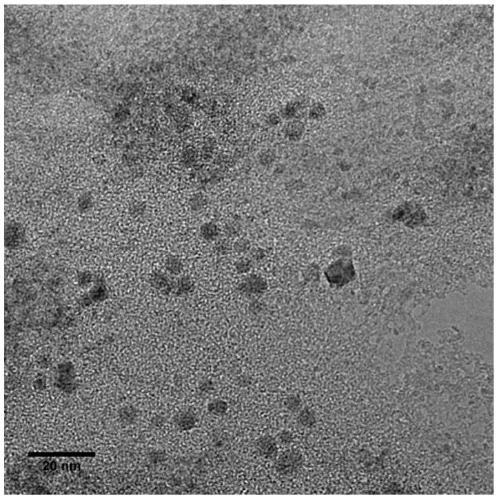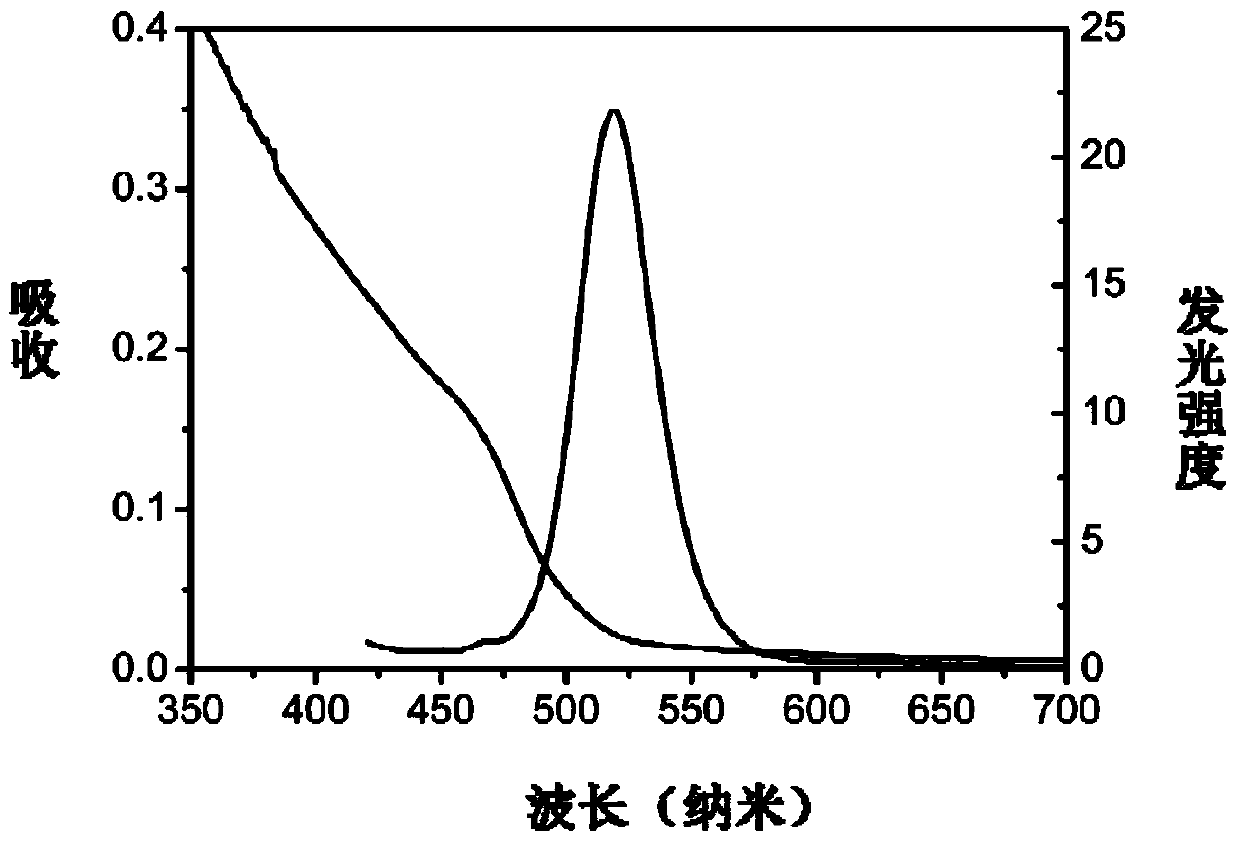A kind of fluorescent nanoparticle and its synthesis method, application
A technology of fluorescent nanoparticles and copolymers, applied in the field of fluorescent nanoparticles and their synthesis, to achieve the effects of good stability, weak scattering ability, and narrow emission peaks
- Summary
- Abstract
- Description
- Claims
- Application Information
AI Technical Summary
Problems solved by technology
Method used
Image
Examples
Embodiment 1
[0045] Embodiment 1, the preparation of fluorescent nanoparticles based on CdSeS quantum dots based on methacrylic acid-methyl methacrylate copolymer as matrix material
[0046] Get methacrylic acid-methyl methacrylate copolymer (the number-average molecular weight is 50,000, carboxyl group mass fraction: 1.0%) and CdSeS quantum dots are dissolved in tetrahydrofuran respectively, prepare the concentration of acrylic acid-methyl methacrylate copolymer Tetrahydrofuran solution of 10mg / mL, quantum dot concentration of 0.5mg / mL. Under stirring, the mixed solution containing 100 μL of the copolymer solution and 300 μL of the quantum dot solution was added dropwise into 5.0 mL of water, and the stirring was continued for 10 min. Evaporate tetrahydrofuran at 30° C., and centrifuge to obtain precipitates that are fluorescent nanoparticles; redisperse the obtained precipitates in pure water to obtain a sol of fluorescent nanoparticles containing carboxyl groups on the surface.
[0047...
Embodiment 2
[0049] Example 2, Preparation of fluorescent nanoparticles based on CdSeS quantum dots based on styrene-methacrylic acid block copolymer
[0050] The copolymer in Example 1 is replaced by styrene-methacrylic acid block copolymer (the number average molecular weight is 100,000, styrene group mass fraction: 40%, carboxyl group mass fraction: 25%), concentration is 10mg / mL, prepared fluorescent nanoparticles based on CdSeS quantum dots based on styrene-methacrylic acid block copolymer. Such as Figure 5 As shown, the dynamic light scattering test results show that the average particle size of the prepared fluorescent nanoparticles is 38nm, and the particle size distribution range is 35-46nm. Figure 6 It is the UV-visible absorption spectrum and photoluminescence spectrum of the prepared fluorescent nanoparticle sol. It can be seen from the figure that the fluorescent nanoparticle has strong absorption in the visible and ultraviolet regions, and its main absorption peak is loca...
Embodiment 3
[0051] Example 3, Preparation of fluorescent nanoparticles based on CdSe quantum dots based on methacrylic acid-methyl methacrylate copolymer
[0052] Dissolve methacrylic acid-methyl methacrylate copolymer (number-average molecular weight: 5,000, carboxyl group mass fraction: 10%) and CdSe quantum dots in dimethylformamide to prepare methacrylic acid-methacrylic acid A dimethylformamide solution with a methyl ester copolymer concentration of 10 mg / mL and a CdSe quantum dot concentration of 0.5 mg / mL. Under the condition of stirring, the mixed liquid containing 100 μL of copolymer solution and 100 μL of quantum dot solution was added dropwise into 5.0 mL of water, and the stirring was continued for 10 min. Dimethylformamide was removed by vacuum rotary evaporation at 30° C., centrifuged, and the resulting precipitate was redispersed in pure water to prepare a sol of fluorescent nanoparticles containing carboxyl groups on the surface.
[0053] Such as Figure 7 As shown, the ...
PUM
| Property | Measurement | Unit |
|---|---|---|
| particle size | aaaaa | aaaaa |
| particle diameter | aaaaa | aaaaa |
| particle diameter | aaaaa | aaaaa |
Abstract
Description
Claims
Application Information
 Login to View More
Login to View More - R&D
- Intellectual Property
- Life Sciences
- Materials
- Tech Scout
- Unparalleled Data Quality
- Higher Quality Content
- 60% Fewer Hallucinations
Browse by: Latest US Patents, China's latest patents, Technical Efficacy Thesaurus, Application Domain, Technology Topic, Popular Technical Reports.
© 2025 PatSnap. All rights reserved.Legal|Privacy policy|Modern Slavery Act Transparency Statement|Sitemap|About US| Contact US: help@patsnap.com



